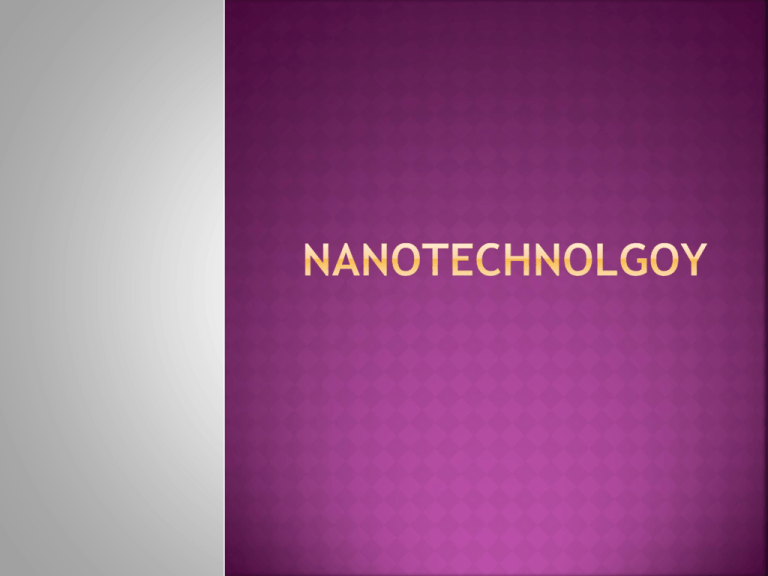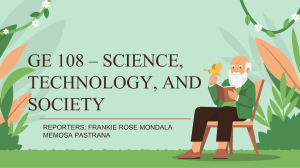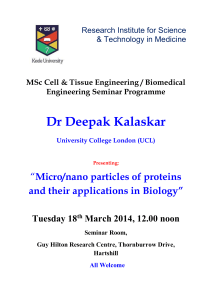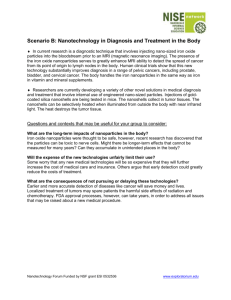File - Biomedical Technology 1 Mrs. Hipp
advertisement

Nano- means “one-billionth” or 10-9. Nanotechnology involves creating and manipulating materials at the nano scale. Nanobiotechnology is biotechnology at the nano scale, applications of tools and processes of nanotechnology to study and manipulate biological systems. Physical properties of a material can be measured without changing the composition of the material, ex: color, density, and boiling temperature. Chemical properties describe how a substance will interact with other substances, ex: flammability and solubility. Materials characterization is analyzing the structure and properties of a material. Bioaccumulation is the buildup of a chemical in the tissue of organisms because they take it in faster than they can get rid of. Biomagnification is the process in which the concentration of a contaminant increases as it passes up the food chain. Photolithography is a process to transfer patterns and make layered materials using photosensitive substances and selective light exposure. Cleanroom is a space designed specifically to keep all airborne particles out. Characterization is analyzing the structure and properties of the material to understand how the material will work in various applications. Making new materials with special properties. Top-down method is starting with existing materials and shape them at the nanoscale. Bottom-up method is use the natural properties of molecules and their tendency to organize themselves according to their charge and other features. One concern is the possibility of producing new kinds of particles that were not previously found in nature, with negative biological effects. Nanoparticles are so small and reactive they may be able to enter and react with cells in ways larger particles would not. In being manufactured into more consumer products, they may break down and release the nanoparticles. These can then accumulate in the environment and bioaccumulate in organisms. They could enter various food webs and biomagnify and build up to toxic levels. This process uses top-down lithography to make tiny, precisely shaped molds, which can be used to make precisely shaped nanoparticles. This technology will lead to a better understanding of how to use nanoparticles as delivery systems for medications. Also, to develop new vaccines that are cheaper, safer and more effective. Careers from technician to research scientist are opening up. Skills needed are strengths in chemistry, physics, and biology. Colleges in NC that have these programs are UNC-G, NC A&T, UNCCharlotte, Forsyth Community College, and NC State. Abbreviated nm Red Blood Cell is 6-10,000 nm is diameter. Ribosome is 30 nm long. DNA molecule is about 3 nm in width.











